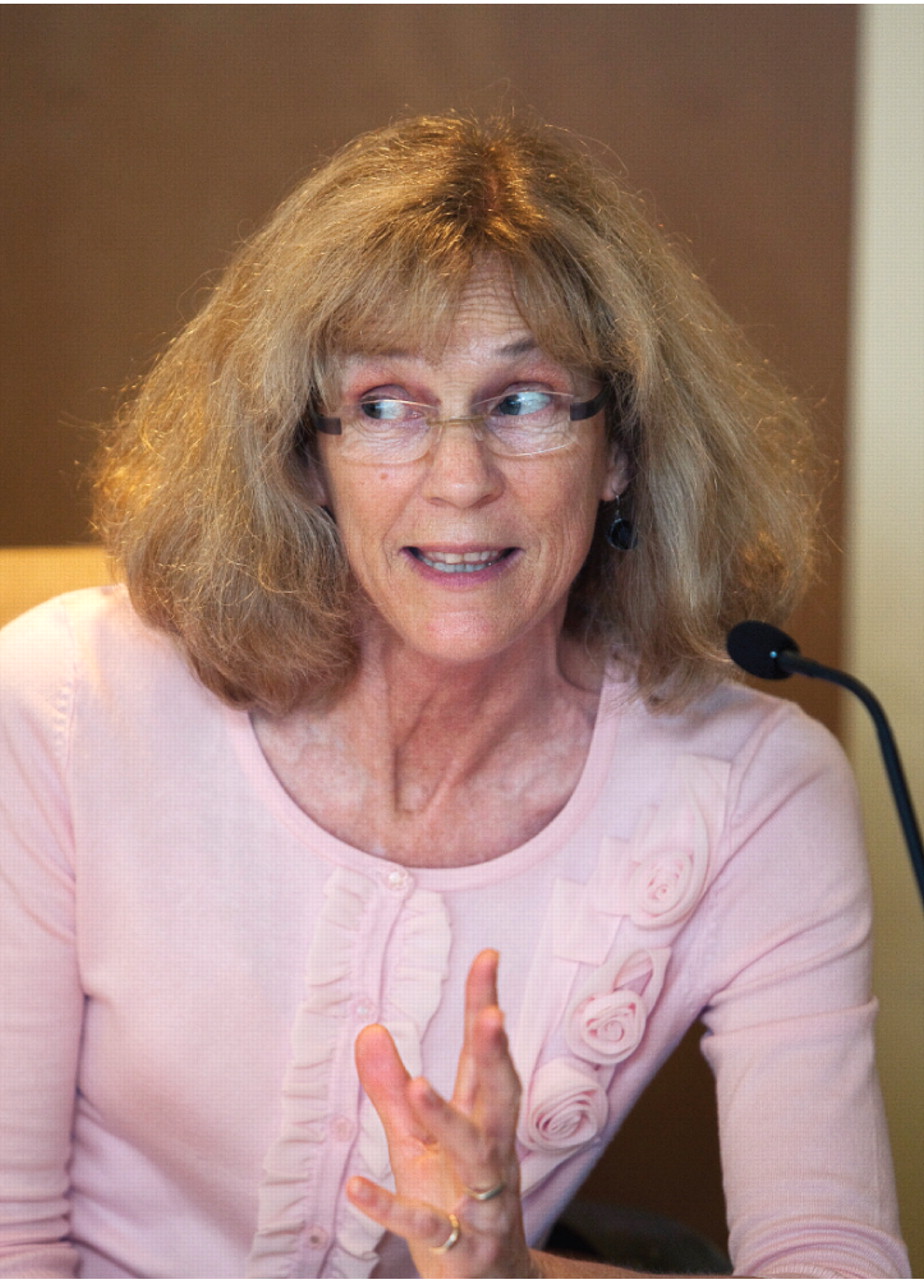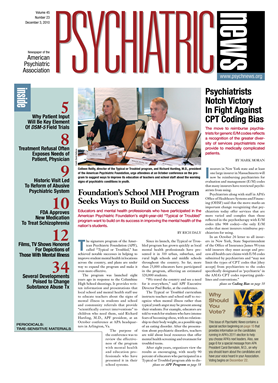The signature program of the American Psychiatric Foundation (APF), called “Typical or Troubled,” has achieved notable successes in helping to improve student mental health in locations across the country, and plans are under way to expand the program and make it even more effective.
The program was launched eight years ago in response to the Columbine High School shootings. It provides written information and presentations that local school and mental health staff use to educate teachers about the signs of mental illness in students and school and community referrals that provide “scientifically correct interventions” to children who need them, said Richard Harding, M.D., APF president, at an October conference at APA headquarters in Arlington, Va.
The purpose of the conference was to review the effectiveness of the program with mental health and education professionals who have presented it in their school systems.
Since its launch, the Typical or Troubled program has grown quickly as local mental health professionals have presented it in 310 urban, suburban, and rural high schools and middle schools throughout the country. So far, more than 25,000 educators have participated in the program, affecting an estimated 320,000 students.
“We travel the country and see a need for it everywhere,” said APF Executive Director Paul Burke, at the conference.
The Typical or Troubled curriculum instructs teachers and school staff to recognize when mental illness rather than typical youth angst may be present among their students. For example, educators are told to watch for students who have intense fears of becoming obese, with no relationship to their body weight, as a possible sign of an eating disorder. After the presentation about psychiatric disorders, teachers are told about local resources that offer mental health screening and treatment for troubled teens.
After eight years, organizers view the results as encouraging, with nearly 90 percent of educators who participated in a Typical or Troubled program able to discern the difference between typical teen behavior and the warning signs of mental illness, according to surveys that presenters conducted at the end of each session and that were compiled by APF. A similar percentage of educators were able to describe the warning signs of psychiatric illness among students. Approximately 75 percent were able to identify the professional services available to students in their school systems.
Of concern were the lower-than-hoped-for rates of program participants who identified students exhibiting the warning signs of a mental illness and took follow-up action, such as either talking to the students or their parents or referring them to a mental health professional in the school system. For example, in 2009 about 70 percent of the program's educator participants said they would talk to these students or their parents about a possible mental disorder, and about 80 percent said that they would refer the students to a mental health professional.
The program evaluation did not ask educators why they preferred referring students to mental health workers instead of talking to the student or parents, but Linda Bueno, director of industry relations for APF, suggested that the preference stemmed from teachers' belief that mental health professionals are better trained to address psychiatric conditions with students and parents, and the teachers may be uncomfortable in conveying such information. Organizers of the program, which briefly addresses ways to discuss mental illness with students but provides no guidance on talking to parents, are considering adding information about communication with both students and parents.
APF is now conducting a follow-up survey to determine the extent to which participation in the program affected teacher responses to signs of mental illness in the months after the presentation.
Possible Improvements Identified
The challenges of presenting unfamiliar information to educators during sessions that are usually wedged into packed teacher in-service and work days may require some tweaks to the program to grab their interest and improve its effectiveness, according to educators and others who have participated in the program and spoke at the October conference.
Michelle Timmons, a teacher-skills consultant and trainer of Typical or Troubled presenters in Ohio, suggested that teachers might absorb more of the information presented if the program was divided into mini-sessions scheduled over the course of a school year, instead of in the one- or two-hour sessions that the program now uses.
Jeanette Kaufmann, a counselor who has presented the Typical or Troubled program throughout Charles County, Md., public schools, said she and other program participants there noticed that teachers were much more engaged and responsive if they used a conversational approach instead of the scripted presentation provided by the program.
Implementing other suggestions would lead to a deeper revamping of the program. For example, Nadja Reilly, Ph.D., director of the Swensrud Depression Prevention Initiative at Children's Hospital Boston, suggested that program organizers add “peer leadership” elements to educate children to identify troubling signs among their fellow students. Additionally, elementary-school teachers might benefit from an amended version targeted to educators of younger children, according to Reilly.
Another major change that might benefit high-school seniors and garner more interest would be adding information to help college-bound students prepare for the psychological stresses and substance abuse issues they will likely face, said Bill Mecca, a crisis-intervention specialist in Trumbull, Conn.
“That could help them or other people they might interact with in college,” Mecca added.
National Version Coming?
Conference participants were excited that the Typical or Troubled program, which has drawn the attention of the Obama administration, could help inspire a national initiative.
Sen. Amy Klobuchar (D-Minn.) is expected to introduce legislation to train public-school teachers to identify the early warning signs of mental illness. The bill is based on an established program called Family-to-Family in Minnesota, which takes a slightly different approach than that of Typical or Troubled by training teachers to inform other educators and families about the warning signs of mental illness.
Although the fate of the expected federal legislation is uncertain, the need for this type of program is clear. Burke and other speakers highlighted the persistent, unmet mental health care needs of children in the United States, approximately 4 million of whom suffer from major mental health disorders, according to recent research. About 90 percent of these youngsters display warning signs of mental illness by age 15, but people around them need far more education to identify them.
“If this resulted in one less tragedy, then it would be worth everything,” Burke said.



